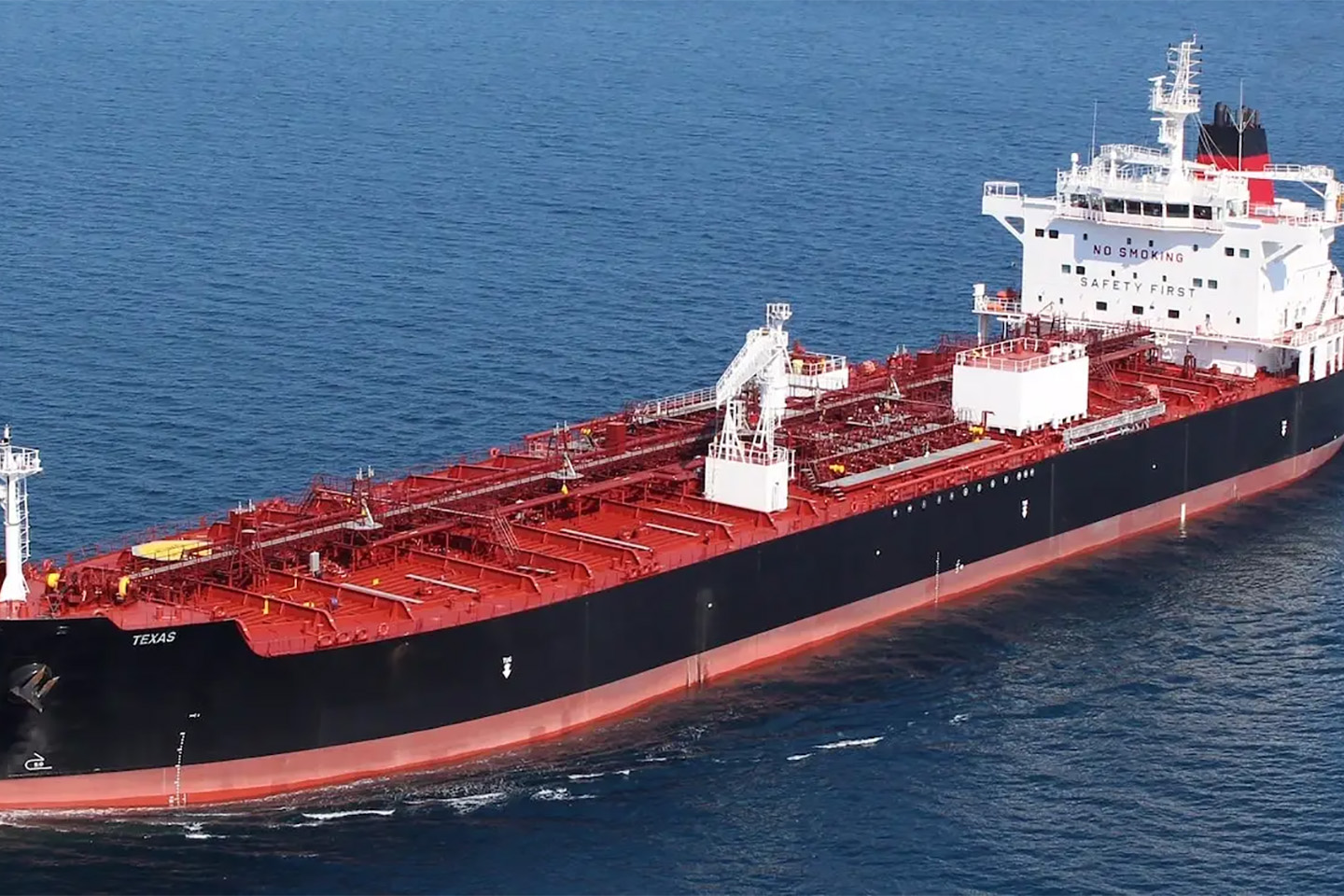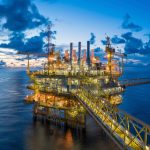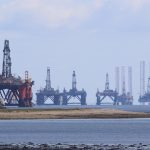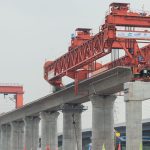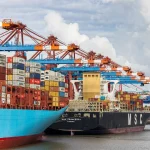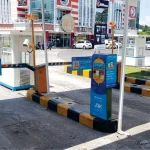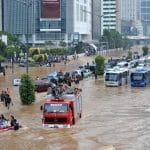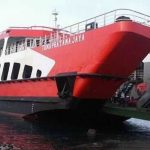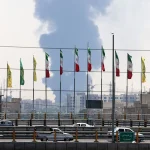Liga Asuransi – Dear readers, how are you? I hope your business is doing well.
One of the benefits of Risk Management is greater resilience. By identifying and managing risks, companies can build strength and better withstand unexpected events or disruptions.
This website mainly discusses risk management and insurance; this time, we will discuss the risks of Oil and gas Transportation.
I warmly welcome new readers, and I hope you enjoy this article. If you want more information about risk management and insurance, you can read it by clicking the headings at the top, the right, and the left of this website.
If you are interested in this article, please share it with your friends so they can understand as you do.
Understanding the Oil and Gas Transportation
The oil and gas transportation as the downstream sector of the oil and gas industry is considered high risk due to the numerous operational, market, regulatory, and environmental risks involved in transforming oil and gas into usable products.
The transformation of oil and gas, also known as the downstream sector of the oil and gas industry, can be considered high risk for several reasons:
- Environmental Risks
The downstream sector involves the refining, transporting, and distributing of petroleum products. These processes can have significant environmental impacts, such as air and water pollution, greenhouse gas emissions, and oil spills, which can cause harm to ecosystems, human health, and the economy.
- Market Risks
Global supply and demand, geopolitical events, and fluctuations in oil prices highly influence the oil and gas industry. This can create market risks for downstream companies, as changes in the market can affect their profit margins and lead to financial losses.
- Operational Risks
The downstream sector involves complex operations, including handling hazardous materials and using heavy machinery. Any errors or malfunctions can lead to safety incidents, fires, and explosions that can cause damage to facilities, loss of life, and reputational harm.
- Regulatory Risks
The oil and gas industry is subject to numerous national, state, and local regulations. Downstream companies must comply with these regulations, which can vary widely depending on the location and type of operation. Failure to comply can result in legal and financial penalties.
Method of oil and gas transportation
Oil and gas transportation can be divided into three main methods: pipeline, rail, and marine transport.
The transportation of oil and gas is a critical aspect of the energy industry, and the choice of transportation method will depend on various factors, including the distance and volume of the oil or gas being transported, the availability of infrastructure, and the economic and environmental considerations.
- Pipeline transport
Pipelines are the most common method of transporting oil and gas over long distances. Pipelines are made of steel or plastic and can be hundreds or even thousands of miles long.
They are buried underground, under the ocean floor, or suspended above the ground and can transport large volumes of oil and gas at high pressure. Pipelines are a relatively safe and efficient method of transportation, with low costs and minimal environmental impact.
- Rail transport
Rail transport is often used to transport crude oil and refined petroleum products over shorter distances or to areas where pipelines are unavailable. Rail transport is more flexible than pipelines and can transport smaller volumes of oil and gas. However, it is also more expensive and can pose higher safety risks due to the potential for derailments and spills.
- Marine transport
Marine transport is used to move oil and gas across oceans and seas. Large tankers, barges, and other vessels transport crude oil and refined petroleum products, such as gasoline and diesel fuel.
Marine transport is highly regulated to ensure the safety of both the cargo and the environment. However, it can also pose significant environmental risks in the event of spills or accidents.
In addition to these main transportation methods, oil and gas may be transported by truck or barge for short distances, such as from a production site to a nearby refinery or storage facility.
Type of land vehicles is used for land transportation of oil and gas.
There are several types of vehicles used for land transportation of oil and gas, depending on the operation’s specific requirements and the region’s geography. Some of the most common types of vehicles used for land transportation of oil and gas are:
- Tanker trucks
Tanker trucks are used for short to medium-distance transportation of liquid petroleum products, such as crude oil, gasoline, diesel, and jet fuel. They are designed to transport large quantities of liquid and are equipped with pumps and hoses to load and unload the product.
- Rail tank cars
Rail tank cars are used for long-distance transportation of petroleum products. They are similar in design to tanker trucks but can carry larger quantities of liquid. They are typically used to transport crude oil and other petroleum products over long distances.
- Pipeline trucks
Pipeline trucks transport pipeline sections, valves, fittings, and other equipment to and from pipeline construction sites. They are designed to carry large, heavy equipment and are equipped with cranes and other lifting devices to facilitate the loading and unloading of equipment.
- Heavy haul trucks
Heavy haul trucks transport large equipment used in the oil and gas industry, such as drilling rigs, compressors, and processing equipment. These trucks are designed to carry heavy loads and are equipped with specialized trailers to transport the equipment.
- Oilfield service trucks
Oilfield service trucks transport equipment and supplies to and from drilling sites. They are equipped with tools, spare parts, and other equipment needed to maintain and repair drilling equipment on-site.
The types of vessels or ships used for oil and gas transportation.
Various types of vessels and ships are used for oil and gas transportation, depending on the type of product being transported, the distance of the journey, and the sea conditions. Here are some of the most common types of vessels and ships used for oil and gas transportation:
- Tankers
Tankers are large ships specially designed to carry liquid cargo, such as crude oil, refined petroleum products, and liquefied natural gas (LNG). They can vary in size from small coastal tankers to giant supertankers that can carry over 2 million barrels of oil.
- Liquefied natural gas (LNG) carriers.
LNG carriers are specialized tankers that transport liquefied natural gas at very low temperatures. These ships are highly insulated and typically have several independent tanks to store the LNG.
- Floating production storage and offloading (FPSO) vessels
FPSO vessels are floating facilities that produce, store, and offload oil and gas from offshore fields. They can be used in deep water locations where it is not economical to construct fixed production platforms.
- Offshore supply vessels
Offshore supply vessels transport equipment, supplies, and personnel to and from offshore drilling and production facilities. They often have cranes, winches, and other specialized equipment to support offshore operations.
- Barges
Barges are flat-bottomed boats often used for transporting heavy equipment and supplies to remote locations along inland waterways. They can be used to transport crude oil, refined products, and other types of cargo.
What kind of accidents and losses happened in oil and gas transportation?
Unfortunately, there have been several accidents and losses associated with oil and gas transportation, including:
- Oil spills
An oil spill is one of oil transportation’s most significant environmental disasters. These spills can occur from tanker accidents, pipeline leaks, and other incidents and devastate marine life, shorelines, and local communities. Some notable examples of significant oil spills include the Exxon Valdez spill in 1989 and the Deepwater Horizon spill in 2010.
- Explosions and fires
Oil and gas transportation also risks explosions and fires, particularly during loading and unloading operations. These incidents can occur on ships, tankers, or at storage facilities and can cause significant damage to infrastructure and harm to workers and local communities.
- Pipeline leaks
Pipeline leaks can also cause environmental damage and risk public safety. Leaks can occur due to corrosion, equipment failure, or other factors and can release oil or gas into the surrounding environment.
- Transportation accidents
Accidents involving oil and gas vehicles, such as tanker trucks or rail cars, can result in spills, fires, and explosions. These incidents can occur due to driver error, equipment failure, or other factors and can significantly affect public safety and the environment.
- Economic losses
In addition to the human and environmental costs, oil and gas transportation accidents can also result in significant economic losses. These can include cleanup costs, fines and penalties, lost productivity, and damage to infrastructure and property.
Oil and gas transportation accidents in Indonesia
Indonesia has had several oil and gas transportation accidents over the years. Here are a few notable examples:
- Balikpapan oil spill: In 2018
An oil spill occurred in Balikpapan, East Kalimantan, after a pipeline owned by state-owned oil and gas company Pertamina leaked. The spill caused a fire that killed five people and significantly damaged the local environment.
- Aceh oil tanker explosion: In 2014
An oil tanker exploded in the waters off the coast of Aceh, killing several people and causing an oil spill.
- Cilacap pipeline explosion: In 2012
A pipeline owned by Pertamina exploded in Cilacap, Central Java, killing several people and injuring many more.
- Bekasi gas pipeline explosion: In 2011
A gas pipeline owned by state-owned oil and gas company Pertamina exploded in Bekasi, West Java, killing at least 22 people and injuring dozens more.
These incidents highlight the importance of maintaining safe and reliable infrastructure and ensuring that proper safety procedures are in place to prevent accidents and respond quickly in the event of an incident.
The Indonesian government and industry stakeholders continue to work on improving safety standards and implementing measures to reduce the risk of oil and gas transportation accidents in the future.
What types of insurance are needed for oil and gas transportation?
It’s worth noting that the specific types of insurance needed for oil and gas transportation can vary depending on the size and scope of the operation, as well as local laws and regulations.
Various types of insurance are needed for oil and gas transportation to protect against the risks and potential losses associated with these operations.
Some of the common types of insurance for oil and gas transportation include:
This insurance covers ships, tankers, and other vessels transporting oil and gas by sea. Marine insurance can cover risks such as collisions, grounding, piracy, and cargo damage or loss.
This type of insurance provides coverage for the physical loss or damage of oil and gas during transit, including spills and leaks. It can also cover the damage or loss of other transported cargo, such as equipment or supplies.
Liability insurance provides coverage for claims of damage or injury caused by oil and gas transportation. This can include claims for environmental damage, personal injury, or property damage resulting from oil spills or other accidents.
Property insurance can provide coverage for damage or loss to property owned by the oil and gas company or its contractors, including pipelines, storage tanks, and other infrastructure.
- Business interruption insurance
This type of insurance provides coverage for financial losses resulting from an interruption of operations due to an unexpected event, such as an accident or natural disaster.
- Directors’ and officers’ liability insurance
This insurance can protect the directors and officers of the oil and gas company against claims of negligence or wrongdoing that result in financial losses for the company or its stakeholders.
It’s worth noting that the specific types of insurance needed for oil and gas transportation can vary depending on the size and scope of the operation, as well as local laws and regulations.
Why is using an insurance broker’s services essential for insurance arrangements of oil and gas transportation?
Using an insurance broker’s services is essential for insurance arrangements of oil and gas transportation for several reasons, including:
- Expertise
Insurance brokers have specialized knowledge and expertise in the insurance market, including the oil and gas industry.
Using an insurance broker’s services can help oil and gas companies obtain the coverage they need to protect against risks and potential losses while also ensuring that they are getting the best value for their insurance dollars and operating responsibly and promptly.
They can help oil and gas companies navigate the complex and ever-changing insurance landscape and advise on the types and levels of coverage needed to protect against risks adequately.
- Access to markets
Insurance brokers have access to a broad network of insurance providers and can help oil and gas companies obtain the best coverage at the best price.
They can negotiate on behalf of the company to obtain favorable terms and conditions and ensure that the company is getting the most value for its insurance dollars.
- Risk management
Insurance brokers can help oil and gas companies assess and manage their risks, including identifying potential risks and implementing risk management strategies to minimize the likelihood and impact of losses. This can help to reduce insurance premiums and improve the company’s overall risk profile.
- Claims management.
In the event of a loss, insurance brokers can provide valuable assistance in managing the claims process, including advocating on behalf of the company and ensuring that claims are handled fairly and efficiently. This can help minimize the loss’s impact on the company’s operations and bottom line.
- Compliance
Insurance brokers can help oil and gas companies navigate the complex regulatory environment and comply with all applicable insurance and risk management requirements.
This can help mitigate the risk of fines or penalties and ensure that the company operates responsibly and sustainably.
Overall, using an insurance broker’s services can help oil and gas companies to obtain the coverage they need to protect against risks and potential losses while also ensuring that they are getting the best value for their insurance dollars and operating in a responsible and compliant manner.
One of the insurance broker in Indonesia focusing on oil gas is L&G Insurance Broker.
For all your insurance needs call L&G now!
—
LOOKING FOR INSURANCE PRODUCTS? DON’T WASTE YOUR TIME AND CALL US RIGHT NOW
24 HOURS L&G HOTLINE: 0811-8507-773 (CALL – WHATSAPP – SMS)
website: lngrisk.co.id
E-mail: customer.support@lngrisk.co.id
—

